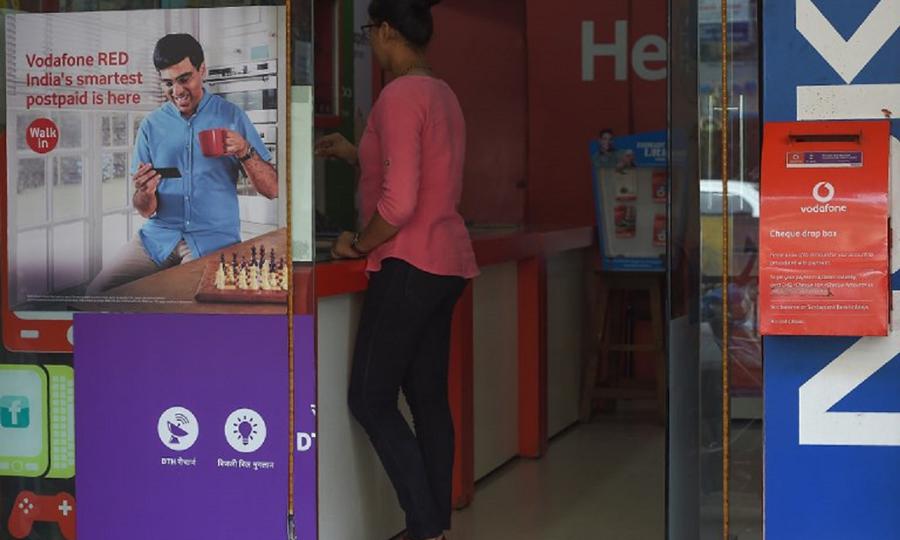(ATF) It has rarely been a smooth journey for Vodafone in India ever since the UK-headquartered global telecom services provider entered the country a decade back. Yet despite stumbling repeatedly it has never failed to pull itself up; and it is trying that again.
On Monday Vodafone Idea Limited (VIL), the joint-venture mobile telephony operator in which the British multinational telecommunications parent Vodafone Group holds a majority share, announced a new identity, rebranding Vodafone Idea as Vi (read as We).
The announcement was made through a virtual media conference, in which Managing Director and Chief Executive Officer of Vodafone Idea Ravinder Takkar said: “The integration of two brands is a culmination of the largest telecom integration in the world. It’s time for a fresh start.”
The idea behind the relaunch, which comes two years after the August 2018 merger of Vodafone and Idea Cellular, was to form a combined brand identity and advertising around it, the company said.
Until now, the operator has been advertising the two brands separately
Committed to all
In a separate statement Vodafone Group CEO Nick Read said the group believed now is the perfect time to launch Vi, one company that combines the strength of Vodafone India and Idea.
He added that with the integration of its 2G, 3G and 4G networks, the unified brand is committed to providing a superior network experience, better customer services and leading products and services.
“VIL’s 4G population coverage now reaches one billion people,” Takkar said. “With the successful integration of two strong networks and deployment of new-age technologies, Vi customers will now be able to enjoy the combined strength of a high-powered, unified network.”
Takkar also said that the new entity will empower Indian enterprise customers with future-ready products and services to help them scale up, become more efficient and tap new, emerging opportunities in the digital era.
The CEO added that the new entity will continue to partner with the government to push forward India’s new digital economy mission. Traditionally, Idea has been stronger with a large chunk of its user base in the tier-II and tier-III towns in India, while Vodafone has remained focused on the urban regions, the tier-I towns
Trials and tribulations
Ever since its entry in July 2007, following the acquisition of the controlling interest of Honk Kong’s Hutchison-Essar for $11.1bn, and buying out the remaining stake of the Essar Group (for $5.46bn in 2011), Vodafone Group’s journey has been mired in trouble.
Soon after getting control of the India business, for instance, Vodafone India was thrust into a $2.5-billion tax dispute with the Indian Tax authorities who demanded that since the transaction involved the purchase of assets of an Indian company, the group was liable to pay taxes in India. The company is still battling that demand in the international courts.
Then in 2016 Vodafone faced a new challenge with the entry of Reliance Jio, which unleashed a cut-throat price war in the India telecom sector. Marred by the price-war, Vodafone India and Idea Cellular, a local operator that was also suffering heavy losses along with Vodafone India, announced a merger.
READ MORE: Reliance offers India’s growth story to its strategic and tactical investors
Jio’s entry was devastating not only for the sector, but also for VIL, which saw its once-largest user base plunge to nearly 280 million in June from 408 million at the time of merger. Its revenue market share also plunged 4.48 percentage points sequentially to 23.3% in the June quarter, triggered by heavy market-share declines in urban circles.
However, its biggest blow was dealt by a Supreme Court verdict in October that upheld the Department of Telecommunications definition of Adjust Gross Revenue (AGR), leading to a $19bn liability in dues for the whole sector.
VIL’s AGR dues, however, was pegged highest at $6.7bn, of which it had to pay $1.2 bn recently.
New lease of life
Last week VIL was granted a fresh lease of life when the Supreme Court allowed operators 10 years of staggered payments in dues linked to AGR while asking them to make 10% of the payment upfront by March 2021.
In the same week, the board of VIL approved the raising of $3.3bn through a share sale and debt. The equity infusion would help VIL reduce leverage from 12.3 times to 11.4 times. The new debt capital would also enable VIL to refinance its non-spectrum debt maturing in 2023, analysts said.
During the presentation, Takkar signalled also that the VIL would raise tariffs soon as the new entity heads at increasing the average revenue per user numbers.
























